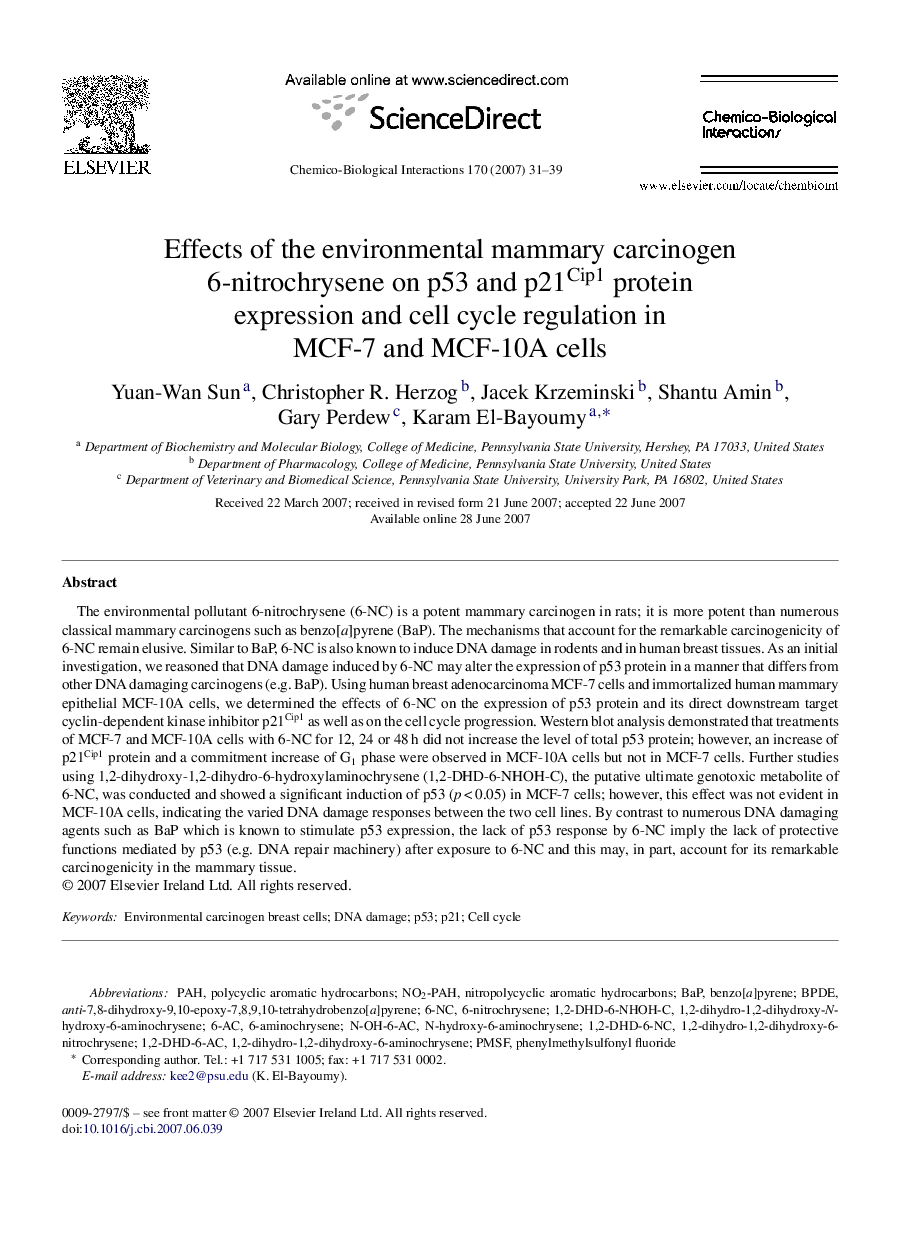| کد مقاله | کد نشریه | سال انتشار | مقاله انگلیسی | نسخه تمام متن |
|---|---|---|---|---|
| 2582189 | 1130226 | 2007 | 9 صفحه PDF | دانلود رایگان |

The environmental pollutant 6-nitrochrysene (6-NC) is a potent mammary carcinogen in rats; it is more potent than numerous classical mammary carcinogens such as benzo[a]pyrene (BaP). The mechanisms that account for the remarkable carcinogenicity of 6-NC remain elusive. Similar to BaP, 6-NC is also known to induce DNA damage in rodents and in human breast tissues. As an initial investigation, we reasoned that DNA damage induced by 6-NC may alter the expression of p53 protein in a manner that differs from other DNA damaging carcinogens (e.g. BaP). Using human breast adenocarcinoma MCF-7 cells and immortalized human mammary epithelial MCF-10A cells, we determined the effects of 6-NC on the expression of p53 protein and its direct downstream target cyclin-dependent kinase inhibitor p21Cip1 as well as on the cell cycle progression. Western blot analysis demonstrated that treatments of MCF-7 and MCF-10A cells with 6-NC for 12, 24 or 48 h did not increase the level of total p53 protein; however, an increase of p21Cip1 protein and a commitment increase of G1 phase were observed in MCF-10A cells but not in MCF-7 cells. Further studies using 1,2-dihydroxy-1,2-dihydro-6-hydroxylaminochrysene (1,2-DHD-6-NHOH-C), the putative ultimate genotoxic metabolite of 6-NC, was conducted and showed a significant induction of p53 (p < 0.05) in MCF-7 cells; however, this effect was not evident in MCF-10A cells, indicating the varied DNA damage responses between the two cell lines. By contrast to numerous DNA damaging agents such as BaP which is known to stimulate p53 expression, the lack of p53 response by 6-NC imply the lack of protective functions mediated by p53 (e.g. DNA repair machinery) after exposure to 6-NC and this may, in part, account for its remarkable carcinogenicity in the mammary tissue.
Journal: Chemico-Biological Interactions - Volume 170, Issue 1, 20 October 2007, Pages 31–39